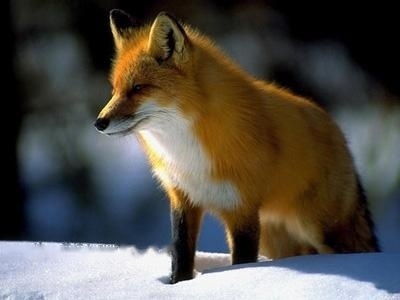
Red Fox
Mating between January and February every year, male foxes fight fiercely for female foxes. The gestation period is about 2 months, and the male and female jointly raise the cubs,
English name: Senegalese Baby Monkey
Origin: Central Africa
Baby The monkey (scientific name Galago senegalensis), also known as the Senegalese baby monkey, is a small nocturnal primate belonging to the genus Infantidae. They have big eyes, strong hind legs, and long tails. It feeds on insects and other small animals, fruits and tree sap, and is the only genus of the Primate Prosimian family. Small in body, roughly the size of squirrel, arboreal , night activities. Quick action, good at jumping, jumping up to 3 to 5 meters. The neck is very flexible and can be turned back 180°; there are 1 pair of nipples on the chest and abdomen. Baby monkeys share some morphological features with loris , has been included in the loris family.
Chinese name: Baby monkey
Latin name: Galago senegalensis
Alternative name: bush monkey, jungle baby
Kingdom: animal kingdom
Department: Chordate
Subphylum: Vertebrate subphylum
Class: Mammalia
Subclass: Therna
Order: Primates
Suborder: ProsimianFamily: Infantidae
Genus: Innosimidae
Species: Infant monkey species
Distribution area: Central Africa
Pinyin: yīng hóu
English name: Northern lesser galago
The baby monkey is morphologically similar to Lori has something in common and was once included in the loris family.
is a lower monkey, roughly the same as squirrel Average size, big round eyes, bat-like ears, and cat-like face. Its hind limbs are long, its hips are well muscled and bouncy, and a fat, long tail is raised forward to maintain a steady balance and act as a rudder. Baby monkeys come in many colors. Various baby monkeys have flat, circular plates on their fingers and toes to facilitate climbing trees and grasping smooth surfaces. They like to live in groups, live at night, and can easily jump up to 4 meters away.
The only genus of the Primate Prosimian suborder Infantidae. Named for the small size of most. The type species is only 11.5 to 17 cm in length. Other species have a body length of no more than 38 cm, a tail length of 15 to 47.5 cm, and a weight of 80 to 1240 grams; looks like a squirrel; eyes are large; The hair is soft and dense, dull, gray-brown to brown, slightly paler on the ventral surface; the legs are larger than the arms, the feet are very long, and the ends of the fingers and toes have large cushions, suitable for crawling on smooth surfaces, with flat Fingers and toenails; the neck is very flexible and can be turned back 180°; there are 1 pair of nipples on the chest and abdomen.
The baby monkey, or jungle baby, is a small tree-dwelling primate found in the forests and savanna regions of sub-Saharan Africa. It is related to the genera lorises and pottos. The length of the baby monkey, including the tail, varies from 10 to 30 inches (25 to 75 cm), which is longer than the body of other apes. Baby monkeys have thick, soft fur that is gray or brown on the outside and light gray or yellow on the inside. They have round faces and large, round eyes.
Most baby monkeys have flat nails on all the fingers and toes, but the needle-clawed galago has sharp nails on the index and second toes. The hands and feet of baby monkeys are natural grasping tools, and the legs and feet are long and powerful. Baby monkeys can jump 15 feet from one tree or branch to another, and can jump on the ground like a kangaroo.
Arboreal, nocturnal. Quick action, good at jumping, jumping up to 3 to 5 meters. During the day, it rests in branches or tree holes, and sometimes lives in abandoned bird nests. Collect small groups to feed on plants and their flowers and fruits, seeds, insects (especially locusts), snails, tree frogs, etc., and larger species also eatLizards and eggs, even birds and rodents. Shining a light source at its eyes at night reflects red light to our naked eyes, rather than blue light like canines.
Like other species of monkeys, baby monkeys like to eat fruits, insects, especially locusts. In the wild, they usually gather in small groups to feed on plants and their flowers, fruits, seeds, etc. Those with heavier tastes also eat lizard and bird eggs. It can even catch birds and rodents.
A light source shines at the eyes of baby monkeys at night, which reflects red light to our naked eyes, not blue light like canines.
Baby monkeys can give birth after four months of growth. They are polygamous and breed twice a year, in November and February respectively. Each litter produces 1 to 3 cubs, and the gestation period is about 110 to 120 sky.